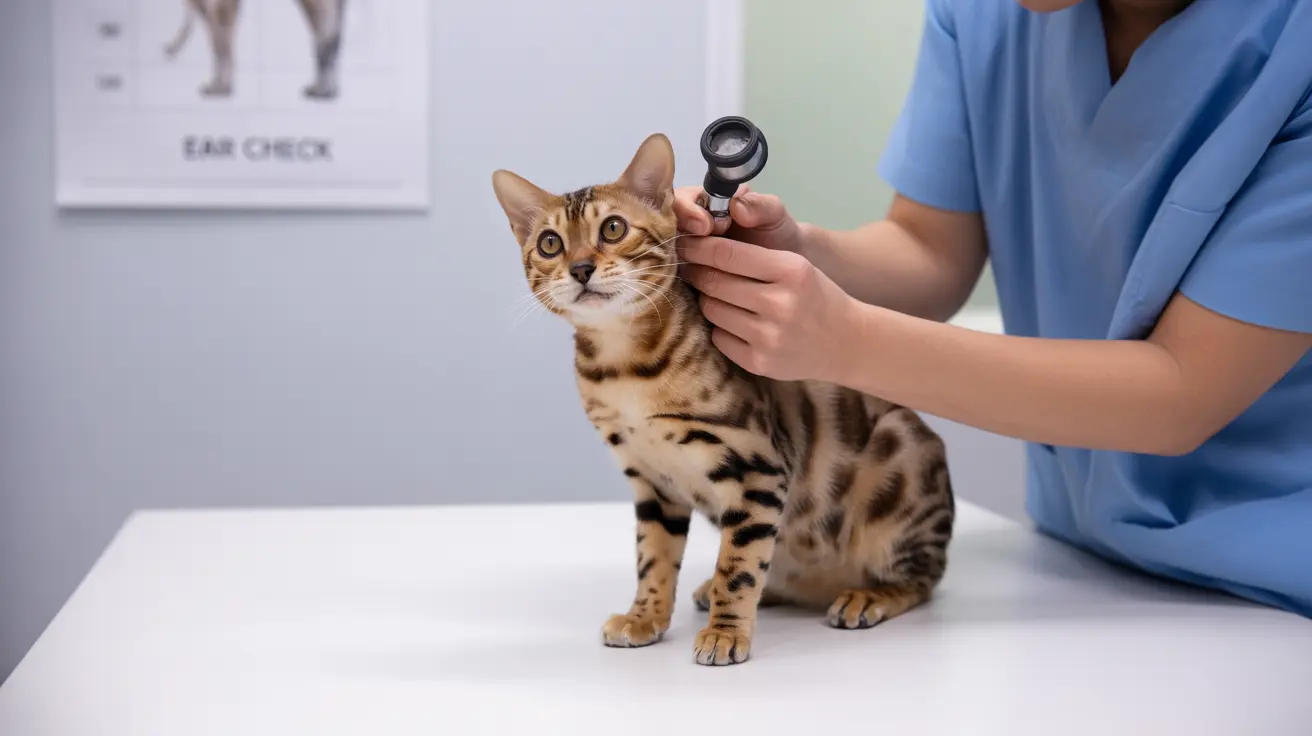As a cat owner, distinguishing between ear mites and normal earwax buildup is crucial for your pet's health. While both conditions can cause discomfort, their causes, symptoms, and treatments differ significantly. This comprehensive guide will help you understand the key differences and know when to seek veterinary care.
Understanding Cat Ear Mites and Earwax
Ear mites (Otodectes cynotis) are microscopic parasites that infest cats' ear canals, feeding on skin oils and wax. These highly contagious creatures are particularly common in outdoor cats and multi-pet households. In contrast, earwax is a natural secretion that helps protect your cat's ears by trapping debris and maintaining proper ear canal lubrication.
Key Differences in Appearance and Symptoms
Visual Characteristics
Ear mite infestations typically produce dark, coffee-ground-like debris that appears black or very dark brown. This distinctive appearance results from a mixture of dried blood, waste products, and ear wax. Normal earwax, however, is usually pale yellow to light brown and has a softer, more uniform consistency.
Behavioral Signs
Cats with ear mites often display intense itching, excessive scratching, and frequent head shaking. You might notice them rubbing their ears against furniture or becoming irritable when their ears are touched. Cats with normal earwax buildup rarely show such dramatic symptoms unless the accumulation is severe.
Diagnosis and Professional Assessment
Only a veterinarian can definitively diagnose ear mites through microscopic examination of ear debris. They'll use an otoscope to examine the ear canal and may collect samples for further testing. This professional evaluation is essential because other conditions, such as bacterial or fungal infections, can present similar symptoms.
Treatment Approaches
Managing Ear Mites
Treatment for ear mites typically involves prescription anti-parasitic medications, either topical or systemic. Your veterinarian might recommend products containing ingredients like ivermectin or selamectin. All pets in the household usually require treatment to prevent reinfestation.
Addressing Earwax Buildup
For excessive earwax, gentle cleaning with veterinarian-approved solutions is usually sufficient. Never use cotton swabs, as they can push debris deeper into the ear canal or cause injury. Regular maintenance cleaning can help prevent future buildup.
Prevention and Ongoing Care
Regular ear checks help detect problems early. Keep your indoor cats separate from untreated outdoor cats, and maintain clean living spaces to reduce the risk of ear mite transmission. Consider using monthly parasite preventatives that include ear mite protection for cats at higher risk.
Frequently Asked Questions
How can I tell if my cat's ear discharge is caused by ear mites or just earwax buildup?
Ear mite discharge appears dark brown to black and resembles coffee grounds, while normal earwax is typically lighter in color (yellow to light brown). Ear mites also cause more intense itching and discomfort.
What are the common symptoms that indicate my cat has ear mites instead of normal earwax?
Signs of ear mites include excessive scratching, head shaking, dark crumbly debris in the ears, and inflammation. Normal earwax rarely causes such severe irritation or behavioral changes.
How do veterinarians diagnose ear mites versus excess earwax in cats?
Veterinarians use an otoscope to examine the ear canal and collect samples for microscopic examination. This allows them to identify mites, eggs, or confirm if the debris is simply accumulated earwax.
What treatments are effective for cat ear mites compared to cleaning excess earwax?
Ear mites require prescription anti-parasitic medications, while excess earwax usually only needs gentle cleaning with approved ear cleansers. Your vet can recommend the most appropriate treatment based on the diagnosis.
Can ear mites cause more serious health problems than earwax buildup in cats?
Yes, untreated ear mites can lead to serious complications including secondary infections, eardrum damage, and potential hearing loss. While excessive earwax can cause discomfort, it rarely leads to severe complications if properly managed.
Conclusion
Understanding the difference between ear mites and earwax is essential for proper cat care. While earwax is a normal and beneficial substance, ear mites require prompt veterinary attention and specific treatment. Regular monitoring and professional check-ups help ensure your cat's ear health remains optimal.






